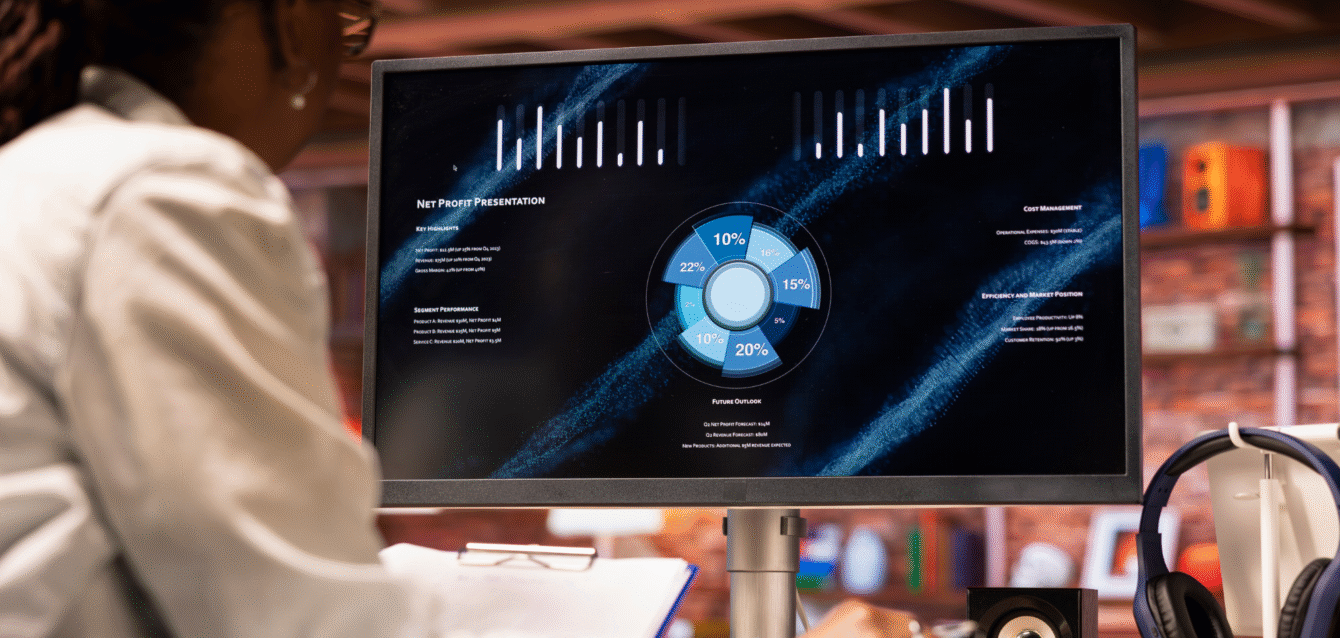Your organization likely already has plenty of data. Are you confident it’s delivering the insights you need?
If not, the challenge may lie in how that data is collected, processed, analyzed, and shared. Each step shapes the decisions you make and the results you achieve.
The data analytics lifecycle provides a structured path to turn raw data into actionable insights. Every stage has a role, and skipping steps can slow progress or create confusion.
In this blog, I’ll walk you through the data analytics lifecycle, explaining what each phase involves and how leaders use it to improve outcomes. You’ll also see how CaliberFocus helps teams streamline workflows, enhance data quality, and make insights actionable.
Here’s what you’ll discover:
- What the Data Analytics Lifecycle Is and Why It Matters
- Stage-by-Stage Breakdown of the Lifecycle
- Common Challenges and How to Overcome Them
- Best Practices for Optimizing Analytics Outcomes
- How CaliberFocus Supports Data-Driven Decision-Making
What Is the Data Analytics Lifecycle?
The data analytics lifecycle is a structured approach for turning data into actionable insights. It guides your organization through the data analytics process, showing how information moves from raw collection to decisions you can rely on.
Every stage matters.
You begin by asking, “What is the first step of the data analytics process?”
It starts with gathering and organizing data. From there, you analyze it to uncover patterns and trends. These findings become actionable data insights that help your team make informed decisions.
Understanding each of the data analytics lifecycle phases ensures that investments in data warehouse solutions and analytical tools deliver real results. Following this lifecycle helps your organization apply insights effectively, improve operations, and achieve measurable growth.
Why the Data Analytics Lifecycle Matters for Business Leaders
“Without big data, you are blind and deaf and in the middle of a freeway.”
— Geoffrey Moore
This quote underscores the critical importance of data in today’s business landscape. Without a structured approach to harnessing data, organizations risk navigating blindly.
A formal data analytics lifecycle offers your organization a clear path to transform raw data into actionable insights. It provides structure, focus, and measurable outcomes.
By adhering to this lifecycle, you can:
- Define problems and objectives with clarity.
- Streamline operations by reducing redundant efforts and establishing reliable processes.
- Manage larger datasets effectively, scaling without compromising accuracy.
- Strengthen governance by ensuring data quality, compliance, and trust.
- Deliver insights that directly contribute to strategic goals like revenue growth, cost optimization, and risk management.
For business leaders, the data analytics lifecycle is more than a technical framework; it serves as a practical guide for aligning data initiatives with organizational priorities and driving meaningful results.
The Six Phases of the Data Analytics Lifecycle
The lifecycle can be broken into six essential phases. Each phase builds on the last, ensuring that insights flow naturally from one stage to another.
Phase 1: Discovery and Business Understanding
Every analytics journey starts by defining the business problem.
You need clear objectives to guide the process, whether the goal is reducing churn, improving efficiency, or identifying new revenue streams. Aligning stakeholders early ensures the analysis remains relevant and accurate.
Phase 2: Data Collection and Preparation
With objectives in place, gather the data you need. This includes structured sources like CRM and ERP systems, as well as unstructured sources such as emails, logs, or social media. Cleaning, validating, and transforming data is essential. Research shows 60–80% of analytics effort is spent on preparation.
Tools like ETL pipelines, data warehouse solutions, and customer data platforms (CDPs) simplify integration and create a solid foundation for the next phases.
Phase 3: Model Planning and Strategy
Next, define your analytical approach.
Choose statistical models, predictive algorithms, or machine learning techniques based on business needs. The goal is not complexity, it is insight.
For example, predictive models can identify customers likely to churn, enabling proactive engagement strategies.
Phase 4: Model Building and Execution
Models are then built, tested, and validated.
Exploratory data analysis (EDA) helps uncover patterns and anomalies. Collaboration between data scientists and business experts ensures the models are practical and aligned with your organization’s objectives.
By the end of this phase, you have a validated solution ready for deployment.
Phase 5: Communicating and Visualizing Insights
Insights must be clear, not just accurate. Dashboards, reports, and visual storytelling translate analytical results into information that decision-makers can act on.
Focus on outcomes: for example, “This model predicts at-risk customers with 85% reliability, allowing targeted retention campaigns.”
Phase 6: Operationalizing and Monitoring
Finally, deploy insights into production systems. Continuous monitoring keeps models accurate as business conditions change. Feedback loops ensure data remains reliable, helping your organization build systems where actionable data insights drive strategy, rather than supporting one-off initiatives.
Key Insights for Enterprises
The data analytics lifecycle phases are not a one-time checklist but a continuous process. Each iteration sharpens insights, increases organizational learning, and enhances ROI. Business leaders who invest in this approach build resilience, agility, and the ability to act on real-time opportunities.
Enterprises that embrace this lifecycle framework move from fragmented reporting to a culture where every decision is backed by data-driven reasoning.
Final Thoughts
The data analytics lifecycle provides enterprises with a roadmap for transforming raw information into actionable business value. Each phase, from discovery to monitoring, builds toward creating a culture where decisions are driven by reliable insights.
At CaliberFocus, we help organizations embrace this lifecycle by aligning data strategies with enterprise goals, ensuring scalability, and delivering measurable impact. Our data analytics services are designed to support business leaders in adopting a structured approach, not just to manage data, but to build a future where every decision creates opportunity.
FAQs
At CaliberFocus, we emphasize starting with discovery and business understanding. This step ensures that data efforts are tied directly to organizational objectives, avoiding wasted resources on irrelevant analysis.
Data warehouse solutions consolidate structured and unstructured data into a central repository. At CaliberFocus, we integrate these solutions with advanced ETL pipelines, ensuring enterprises gain a reliable, scalable foundation for analytics.
By moving systematically from collection to analysis to visualization, enterprises ensure that data outputs are not just numbers but insights connected to business outcomes. CaliberFocus helps translate raw analytics into practical strategies for growth and efficiency.
Visualization transforms technical findings into accessible stories for decision-makers. At CaliberFocus, we design dashboards and reports that make complex results easy to interpret, ensuring leaders can act quickly on insights.
Models degrade over time if not updated. Continuous monitoring allows enterprises to refine performance, adapt to new data, and maintain relevance. CaliberFocus provides ongoing support to ensure analytics outputs stay aligned with evolving business needs.




